
Peugeot 308 GTi (2015-2017) engines, drive and performance
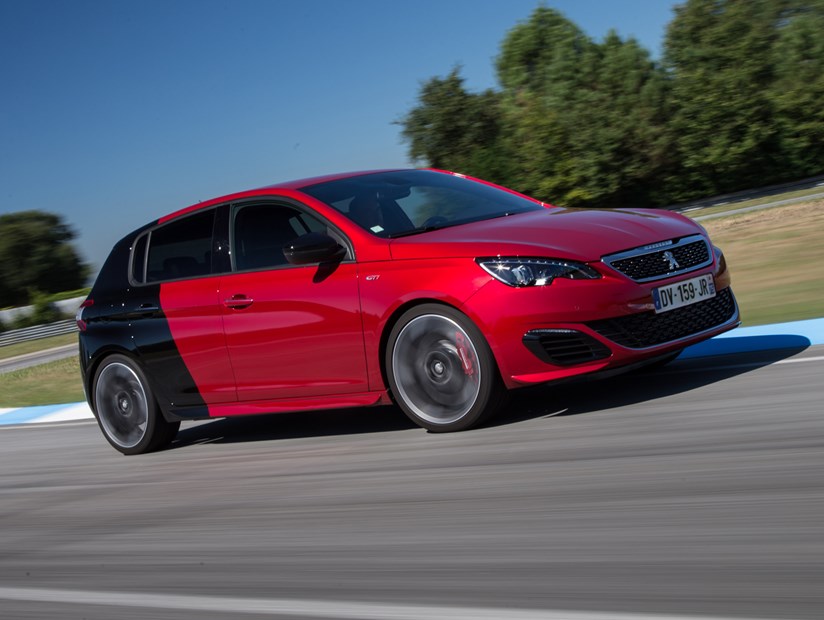
- Highly tuned 1.6-litre four-cylinder petrol engine develops 248bhp or 267bhp
- Former takes 6.2 seconds to sprint from 0-62mph, latter finishes two tenths faster
- Six-speed manual gearbox only, though shift lacks the precision of rivals
They may only use a 1.6-litre four-cylinder engine but regardless of which model you choose, Peugeot 308 GTi performance is impressive. The higher output model takes just six seconds to complete the benchmark 0-62mph sprint and is labelled GTi 270 versus the standard car’s GTi 250 moniker.
Peugeot 308 GTi 250
In the entry-level 308 GTi the 1.6-litre four-cylinder petrol engine develops 248bhp (250PS, hence the name) and allows the car to sprint from 0-62mph in 6.2 seconds. There’s 330Nm of torque, available from just 1,900rpm through to 4,000rpm, so the 308 GTi always feels flexible on the move.
It’s far from a standard 1.6-litre four-cylinder engine with the turbo boost turned up to 11, having been evolved from the unit found in the excellent RCZ R. Forged pistons feature, alongside under-piston oil jets, an aluminium cast block and twin-scroll turbocharger (for better response) to ensure it can cope with creating 248bhp at 6,000rpm.
Pressing the Sport button alters the tone and volume of the synthesised engine note that enters the cabin but while more aggressive it doesn’t lift the tone above that of a conventional – and slightly dull – four-cylinder turbocharged petrol engine.
Peugeot 308 GTi 270
Despite using the same boost pressure (1.5 bar) as the GTi 250 the 267bhp 308 GTi 270 develops another 20bhp over its sibling, which allows for a 0-62mph sprint time two tenths quicker. Peak power arrives at the same 6,000rpm figure but the duration of peak torque extends past 4,000rpm until 5,550rpm. The result is an even more flexible and engaging performer than the GTi 250.
It certainly feels fast and we’d have no trouble in believing the claimed acceleration figures. The larger (380mm) front brake discs are clamped by Alcon four-piston callipers, so while it’ll accelerate faster, the GTi 270 will stop quicker too. During a brief track session these proved resistant to fade with acceptable pedal feel and we suspect on the road (where most Peugeot 308 GTis will spend the bulk of their time) you’ll never trouble them for stopping power.
Manual gearbox only
Both 308 GTi models are fitted with a six-speed manual gearbox as standard – there’s no automatic option currently available. Light of throw, it’s certainly easy to swap between ratios, but the gait feels incredibly long and not especially sporting. A real let-down in the face of what is otherwise an engaging and well-judged dynamic package.
- GTi sits 11mm lower than regular 308 hatch, with re-tuned suspension and beefed-up anti-roll bars
- Top GTi 270 gets Torsen limited-slip differential as standard, along with larger (and lighter) wheels
- Small steering wheel and sharp reactions make GTi fun to drive but still comfortable and refined
Sitting 11mm closer to the ground than the regular Peugeot 308 hatchback, the Peugeot 308 GTi by Peugeot Sport boasts a number of other modifications to the chassis in a bid to make it more fun to drive. Up front a new hollow anti-roll bar, 21mm in diameter, keeps the car flat through the corners. The camber angle of the front wheels has increased from 0.6 degrees to almost 1.7 degrees allowing for sharper turn-in.
Both the 308 GTi 250 and 270 use bespoke front suspension (stiffer springs and re-calibrated shock absorbers) and an altered rear set-up with reinforced wishbones.
On the GTi 270 this is combined with a Torsen limited-slip differential that shuffles power to the wheel with the most traction, allowing for keen drivers to accelerate earlier when cornering. Overall grip is improved and the Peugeot 308 GTi 270 pulls its nose tighter into the corner quickly and neatly. It’s not as sharp as a Renaultsport Megane or as aggressive as the Honda Civic Type-R on turn-in but it makes the Peugeot a surprisingly capable and confidence-inspiring hot hatch at speed.
In fact, such is the grip on offer from the chassis that you’ll likely never bother reaching for the ESP button. On the rare occasion the electronic stability system does feel the need to intervene it does so wholly unobtrusively, too.
If you’re on track however, and want to explore beyond the 308 GTi’s capabilities, a press of the button will disable the system. It’s not a car overly-endowed with a mobile tail though, even under trail braking or when lifting sharply off the throttle round a bend.
The Peugeot 308 GTi 270 comes with 19-inch alloy wheels which are 2kg lighter than the 18-inch sized set on the GTi 250 and wear sticky Michelin Pilot Super Sport tyres as standard.
There is a Sport button, nestling behind the gearlever, but while it changes the glow of the dials to an aggressive red, increases engine noise in the cabin and alters the throttle map, it doesn’t change anything in the steering or suspension. The former is relatively sharp anyway – a feeling exaggerated by the small steering wheel – with 2.95 turns lock to lock, though it doesn’t possess quite the feedback found in some rivals.







.jpg)
.jpg)
.jpg)
.jpg)
.jpg)
.jpg)
.jpg)
.jpg)
.jpg)
.jpg)
.jpg)
.jpg)
.jpg)
.jpg)
.jpg)
.jpg)




















.jpg)
.jpg)
.jpg)
.jpg)
.jpg)
.jpg)
.jpg)
.jpg)
.jpg)
.jpg)
.jpg)
.jpg)
.jpg)
.jpg)
.jpg)
.jpg)
.jpg)
.jpg)
.jpg)
.jpg)
.jpg)

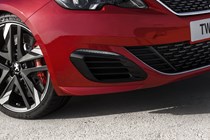
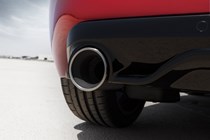

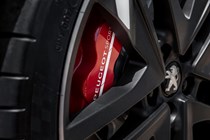










.jpg)
.jpg)
.jpg)
.jpg)
.jpg)
.jpg)
.jpg)
.jpg)
.jpg)
.jpg)
.jpg)
.jpg)
.jpg)
.jpg)
.jpg)
.jpg)
.jpg)
.jpg)
.jpg)
.jpg)
.jpg)
.jpg)
.jpg)
.jpg)
.jpg)
.jpg)
.jpg)
.jpg)
.jpg)
.jpg)
.jpg)
.jpg)
.jpg)
.jpg)
.jpg)
.jpg)
.jpg)
.jpg)
.jpg)



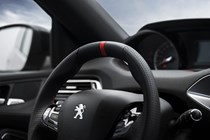
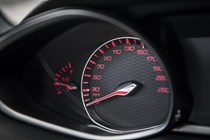
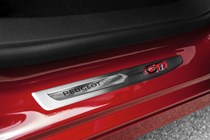





.jpg)
.jpg)
.jpg)
.jpg)
.jpg)

.jpg)
.jpg)
.jpg)
.jpg)





.jpg?quality=50)
.jpg?quality=50)
.jpg?quality=50)
.jpg?quality=50)
.jpg?quality=50)
.jpg?quality=50)
.jpg?quality=50)
.jpg?quality=50)
.jpg?quality=50)
.jpg?quality=50)
.jpg?quality=50)
.jpg?quality=50)
.jpg?quality=50)
.jpg?quality=50)
.jpg?quality=50)
.jpg?quality=50)




















.jpg?quality=50)
.jpg?quality=50)
.jpg?quality=50)
.jpg?quality=50)
.jpg?quality=50)
.jpg?quality=50)
.jpg?quality=50)
.jpg?quality=50)
.jpg?quality=50)
.jpg?quality=50)
.jpg?quality=50)
.jpg?quality=50)
.jpg?quality=50)
.jpg?quality=50)
.jpg?quality=50)
.jpg?quality=50)
.jpg?quality=50)
.jpg?quality=50)
.jpg?quality=50)
.jpg?quality=50)
.jpg?quality=50)















.jpg?quality=50)
.jpg?quality=50)
.jpg?quality=50)
.jpg?quality=50)
.jpg?quality=50)
.jpg?quality=50)
.jpg?quality=50)
.jpg?quality=50)
.jpg?quality=50)
.jpg?quality=50)
.jpg?quality=50)
.jpg?quality=50)
.jpg?quality=50)
.jpg?quality=50)
.jpg?quality=50)
.jpg?quality=50)
.jpg?quality=50)
.jpg?quality=50)
.jpg?quality=50)
.jpg?quality=50)
.jpg?quality=50)
.jpg?quality=50)
.jpg?quality=50)
.jpg?quality=50)
.jpg?quality=50)
.jpg?quality=50)
.jpg?quality=50)
.jpg?quality=50)
.jpg?quality=50)
.jpg?quality=50)
.jpg?quality=50)
.jpg?quality=50)
.jpg?quality=50)
.jpg?quality=50)
.jpg?quality=50)
.jpg?quality=50)
.jpg?quality=50)
.jpg?quality=50)
.jpg?quality=50)











.jpg?quality=50)
.jpg?quality=50)
.jpg?quality=50)
.jpg?quality=50)
.jpg?quality=50)

.jpg?quality=50)
.jpg?quality=50)
.jpg?quality=50)
.jpg?quality=50)